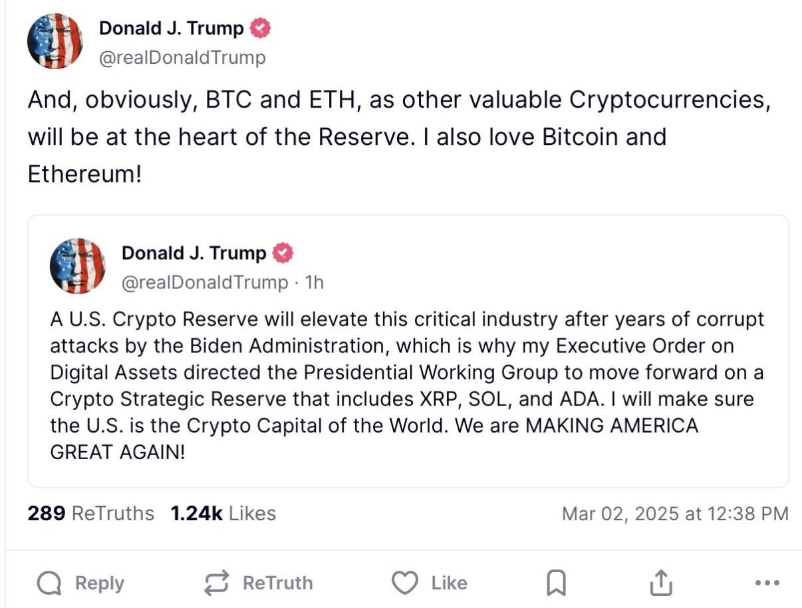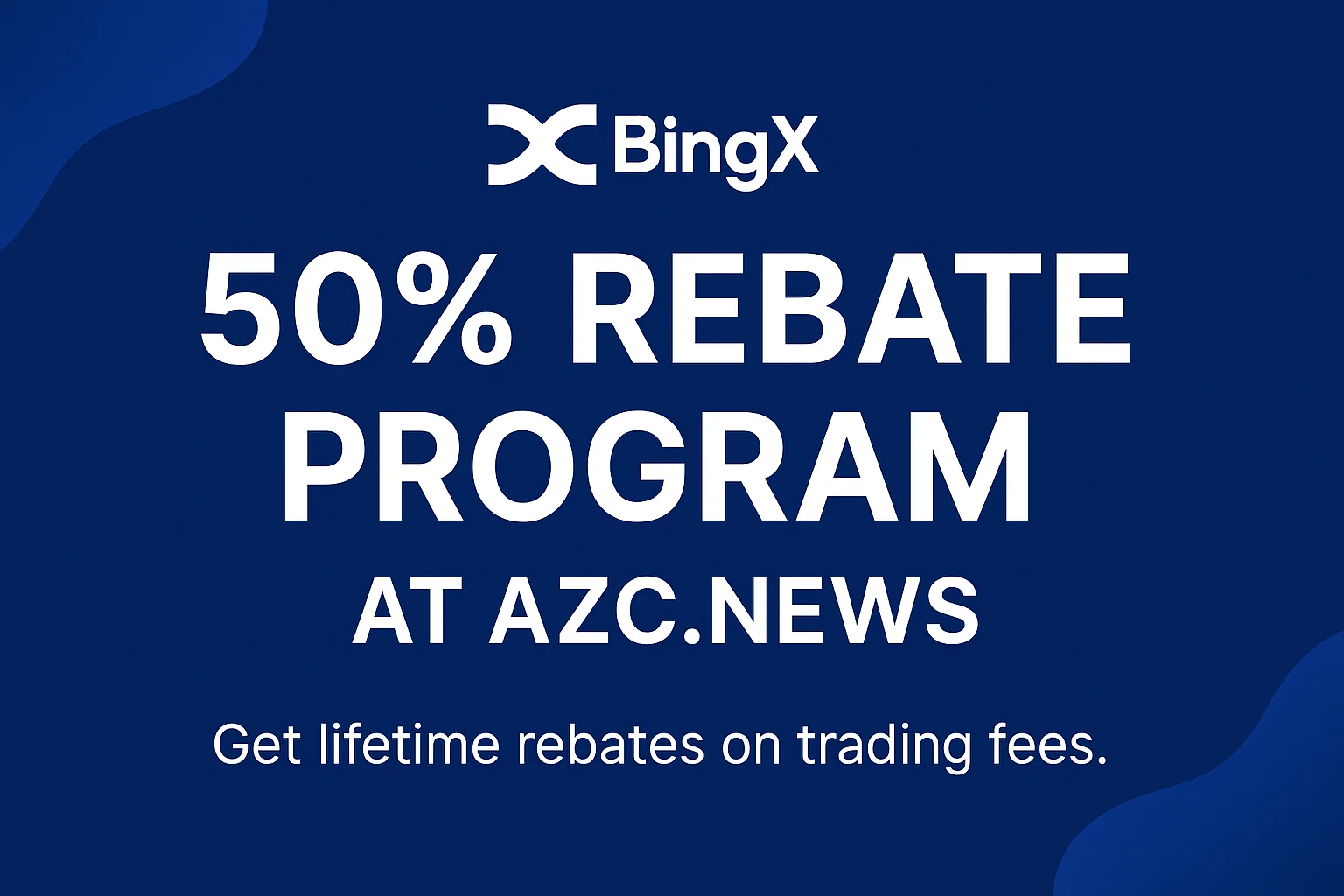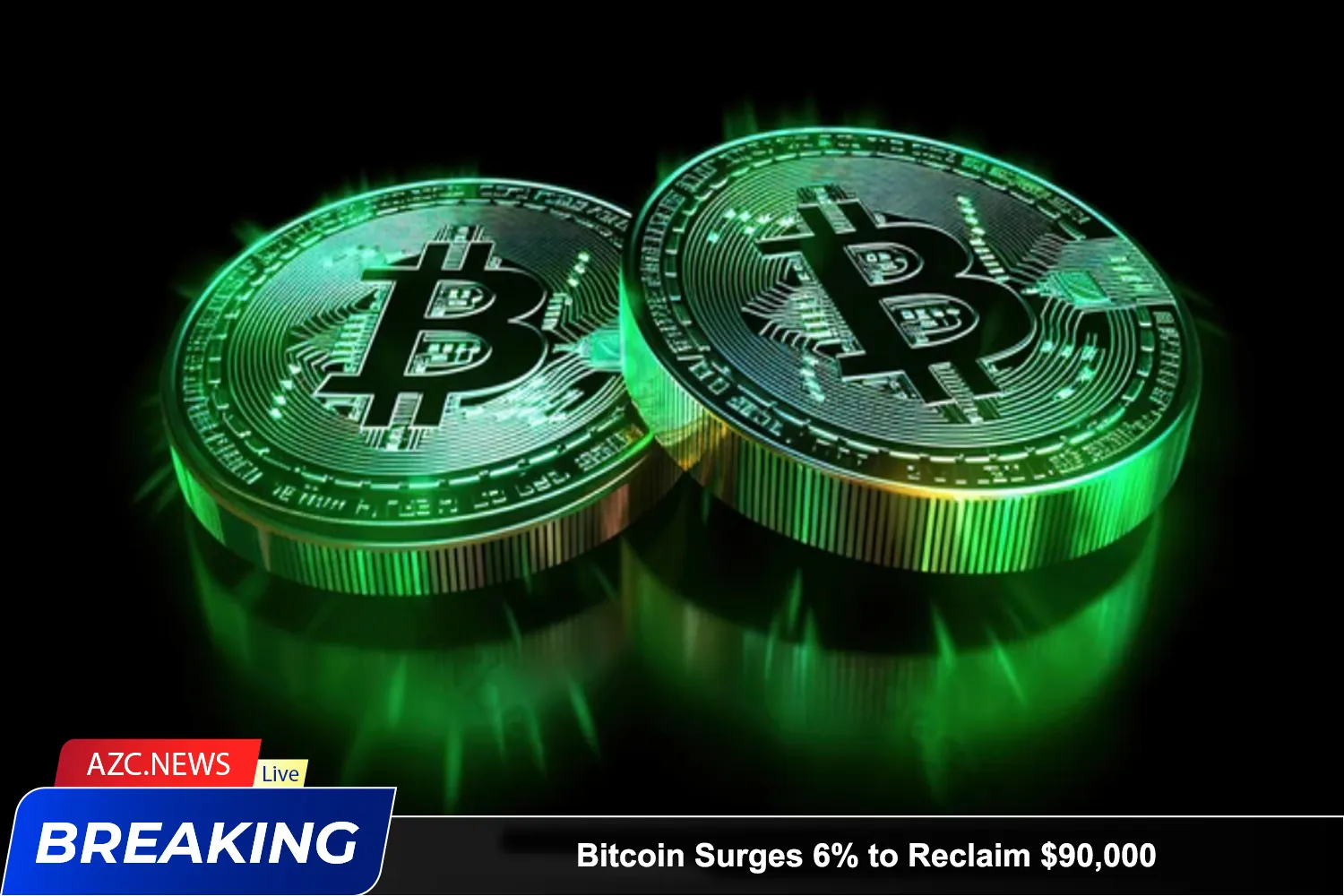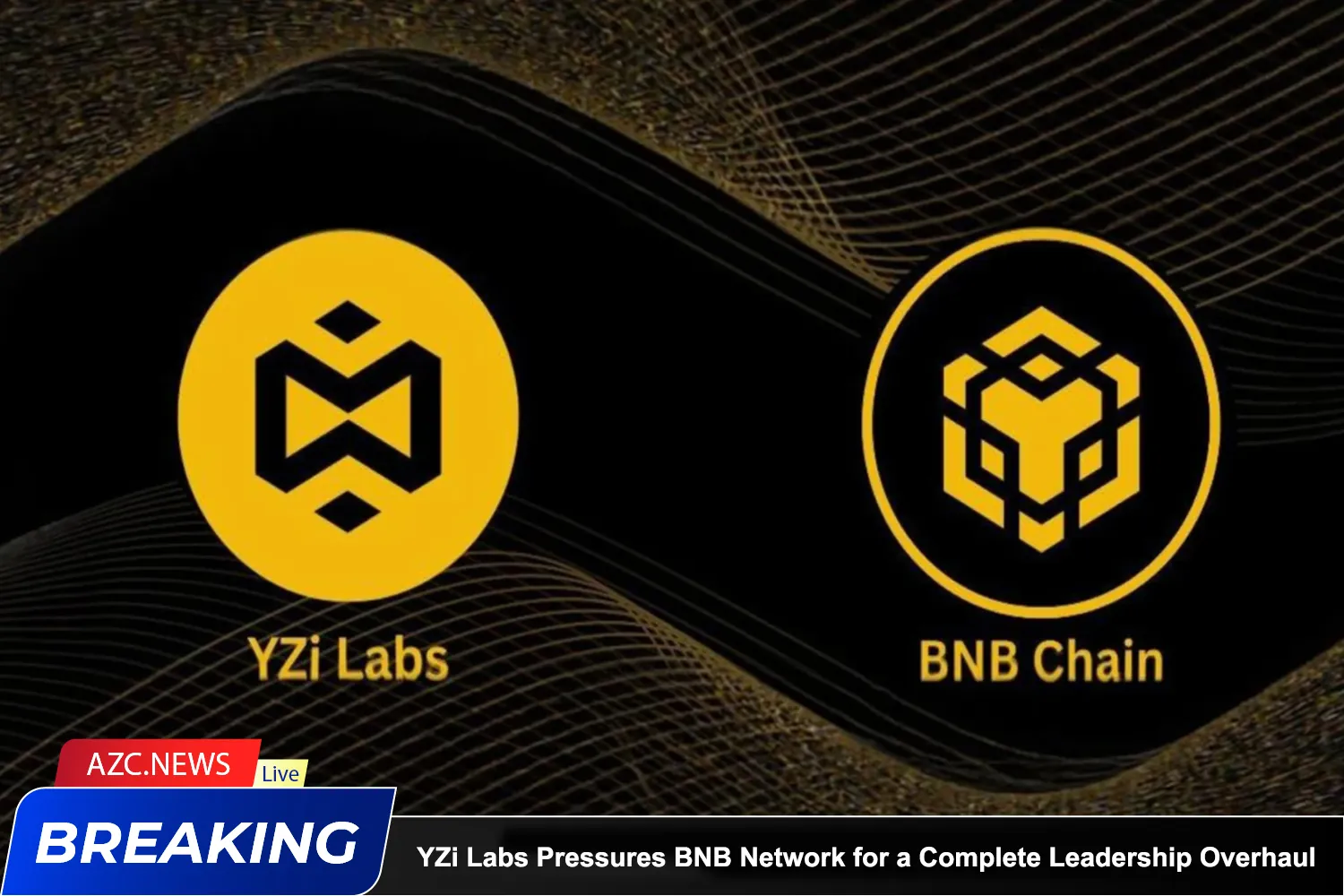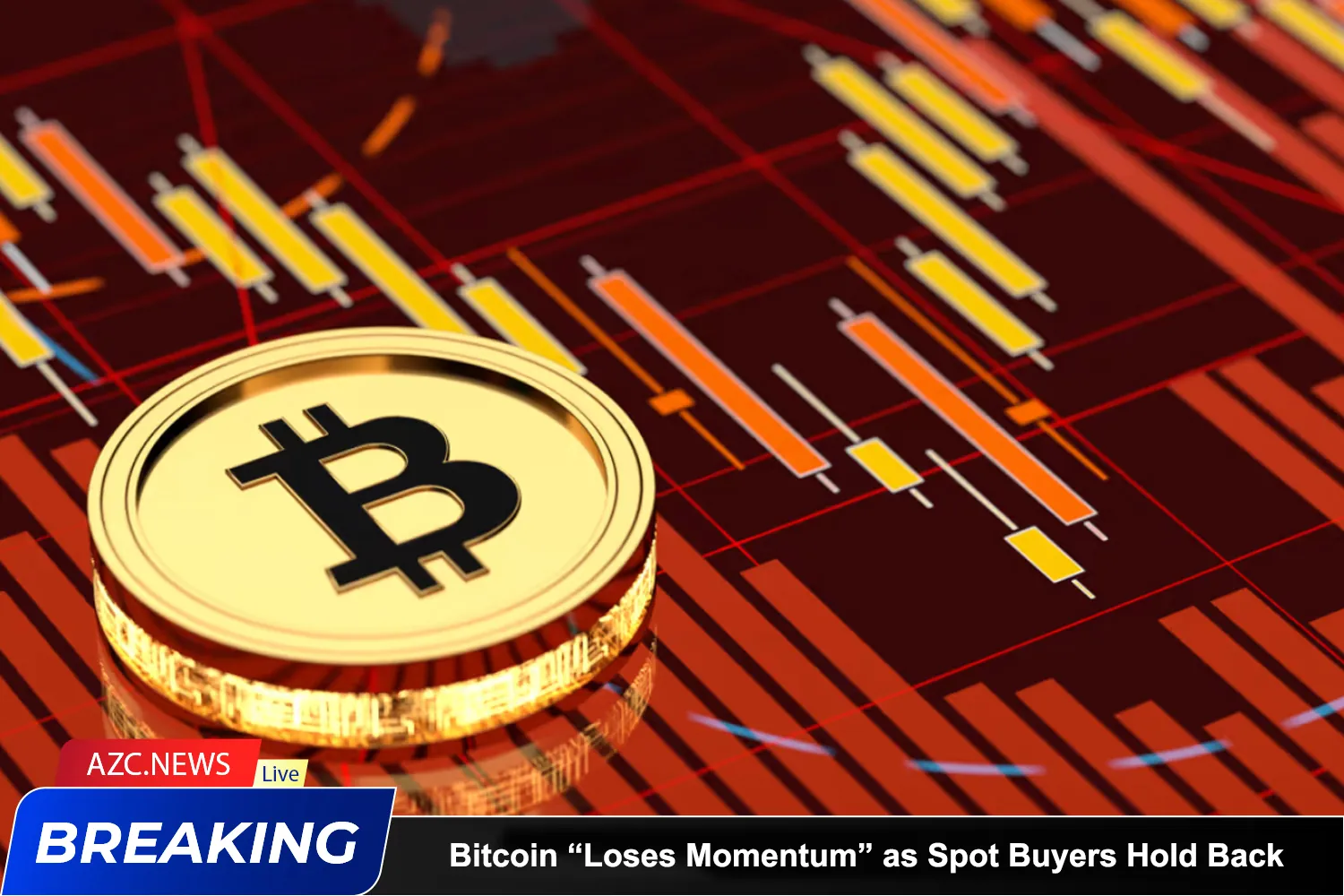On March 6, President Trump signed an executive order to establish the “U.S. Strategic Digital Asset Reserve,” also referred to as the “Digital Asset Treasury.” Under this order, all federal agencies are required to report their holdings of Bitcoin and other cryptocurrencies to the Secretary of the Treasury within 30 days, with an April 5 deadline.
While Bitcoin is almost certain to be the cornerstone of this reserve, the selection of altcoins is drawing significant attention. Just one week before signing the order, President Trump posted on Truth Social, hinting at which cryptocurrencies could be included in the national reserve. The coins mentioned by Trump include:
- Bitcoin (BTC)
- Ethereum (ETH)
- Ripple (XRP)
- Solana (SOL)
- Cardano (ADA)
If confirmed, this move would mark a historic milestone for these altcoins and the broader cryptocurrency market.
Related: The Market Signals an Incoming Altcoin Season
Beyond Bitcoin, each of the selected altcoins possesses unique strengths that make them strong candidates for the U.S. strategic digital asset reserve:
- Ethereum (ETH): The world’s leading smart contract platform, playing a crucial role in DeFi, NFTs, and Web3.
- Ripple (XRP): Designed for fast and efficient cross-border payments, with a vast network of partnerships among international financial institutions.
- Solana (SOL): Known for its high-speed transactions and ultra-low fees, SOL is emerging as one of the most widely adopted blockchain platforms today.
- Cardano (ADA): Recognized for its scientific and sustainable approach, ADA has strong potential for real-world applications and large-scale blockchain projects.
Currently, global investors are eagerly awaiting an official confirmation from the U.S. government. If federal agencies disclose holdings of these digital assets as part of the national reserve, it would mark a pivotal moment for the entire crypto industry.
This move would not only legitimize and enhance the credibility of the cryptocurrency market but also potentially trigger an unprecedented bull run in both scale and intensity.
Furthermore, the U.S. government’s strategic accumulation and management of these digital assets carry profound geopolitical and economic implications. Strengthening its financial position and hedging against global economic volatility, this bold strategy—if executed effectively—could reshape how nations perceive, regulate, and integrate digital assets, ushering in a new era for cryptocurrencies in the global financial system.


